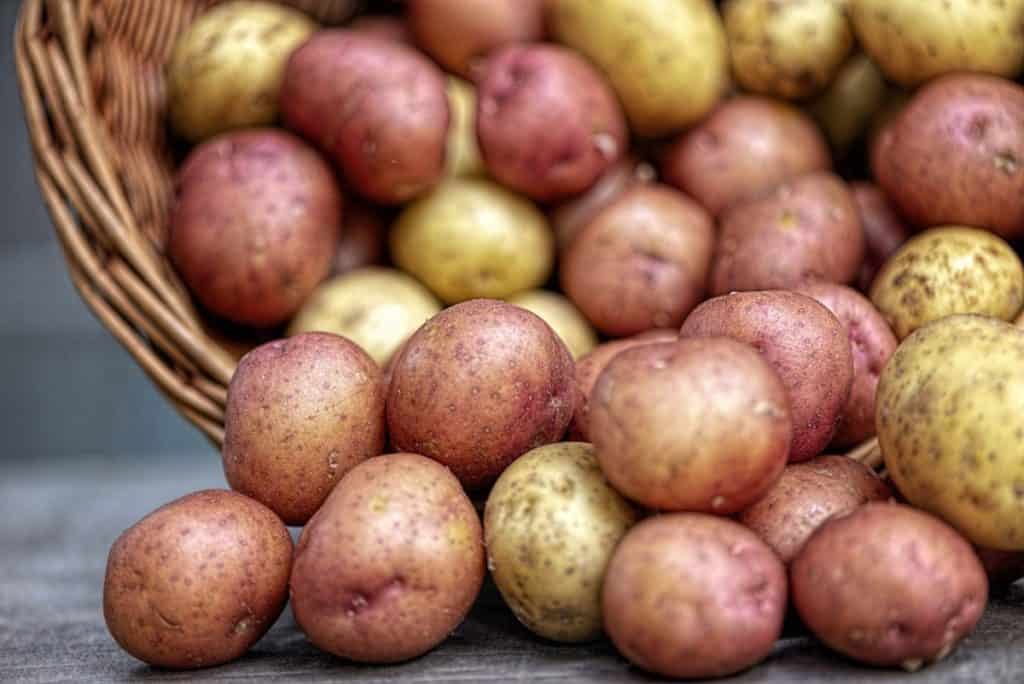BONUS:
HARVESTING
About 100 days after planting (give or take 20 days depending on location, variety, climate and etc.,) you should be ready to harvest.
You know you are ready to harvest when the foliage is starting to dry up and die. At this point, you should cut the plan tops off, and put them in your compost pile. Leave the potatoes to sit a week or two before digging.
Regular garden and raised beds: Using a pitch fork or similar tool, start digging the soil far enough away from the plant so as to not damage the potatoes. Stabbed or scraped potatoes will rot much faster.
From the loose soil, pull out the potatoes by hand, and lay them on the ground. You can leave them exposed to the air for a couple days. This will toughen their skins.
Bucket or container gardens. Once you cut the top foliage off, just move your containers to a cool dry dark place. You only need to harvest each bucket when you are ready to use the potatoes.
Spread out a tarp, and dump the container of soil and potatoes on it, and pick through and harvest the potatoes. You can use the tarp to put the soil back in the bucket or container.

Note: while the soil is on the tarp, you can add fertilizer, peat, etc., and mix it all together by pulling the corners and rolling the soil and contents around before putting it back in the bucket or container for next year. Or you can just put the contents on your garden and rotor till it in for other non-container crops.
STORING
Do NOT wash your potatoes until you are ready to use them for food. Once they have sat out for a couple days move them to a cool dry shaded place, or even a table in the garage or shop. Spread them out so they are not touching each other. Check now and then and pick out any that are starting to rot. After a week or two, place them in a paper bag…. or burlap bad (best) and store in a cool dry place.

SEED POTATOES
This is the fun part.
If all is normal, you will have plenty of small potatoes that are not much larger than a good size hen’s egg. Choose as many as you will need for next years planting, and wrap each one in a news paper, kind of like you would wrap a potato in tin foil for baking. Place in a tray one layer deep, and store in a cool dry place until ready for next year’s planting.
